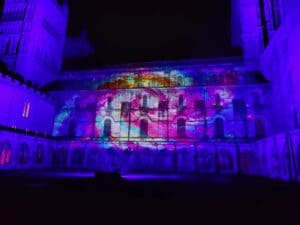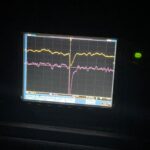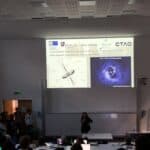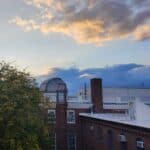Profile
Ieva Jankute
-
About Me:
I am a 2nd year PhD student at Durham University. During the day, I try to uncover the secrets of the universe 🌌, but in the evenings I dance 💃🏻, swordfight ⚔️ and play board/video games 🎲.
-
Read more
I am originally from Lithuania, and I came to the UK in 2018 to study Physics at the University of Southampton. As a part of the degree, I was given the opportunity to conduct astrophysics research in the Center for Astrophysics | Harvard & Smithsonian, USA, where I stayed for 9 months and met other astrophysicists from all over the world! After that, in 2023, I settled in the beautiful city of Durham, where I am currently doing my PhD.

Ever since childhood, I have loved travelling and, to my surprise, being a scientist means I get to go to all sorts of places to talk about and do my research. I had the opportunity to go to Tenerife and twice went to the USA with a stopover in Iceland!
In my free time, I have way too many hobbies, from dancing (breakdance, swing and salsa to name a few) to kendo swordfighting (think Star Wars lightsaber duels…). I also try to find time for weekly D&D sessions, making graphical art and playing with an electric guitar.

-
My pronouns are:
she/her
-
My Work:
I study black holes that live at the centre of the brightest galaxies in galaxy groups ⚫. My main interest is in gamma-rays made by those black holes ☢️.
-
Read more
We can’t see the black holes themselves, since once the light enters them, it cannot escape and travel back to us. However, what we “see” is the surrounding gas and dust spinning around them like a disc 🪐. The gas that could have once been stars is now slowly spiralling into the black holes that feed on it 🌀. We call galaxies that contain “visible” to us black holes – active galaxies.
The reason why I keep using quotation marks to describe the visibility of black holes is that, physically, with our eyes, if we were next to the black hole, we could only see a bright white disk surrounding it. This is due to thermal radiation🕯️, which happens when the gas and dust are heated to high temperatures 🌡️, and would look just like metals, heated until they melt.
But what is radiation, and how do we see it?
Radiation is energy that is stored in a particle of light called a photon🔦. We can see multiples of these particles of light entering our eyes, which our brain then processes to be what we see around us 🏞️. However, our eyes are selective and have evolved to process only those photons that are of certain energies, only what we call visible light 🌈, since only these energies are important for our survival on Earth.
There is, however, other radiation that we cannot see with our eyes, but astronomers build telescopes that can detect this radiation and make images that allow us to see this invisible light 🫥. In this case, the telescopes act as artificial eyes and send the signal to a computer, which acts as a brain, producing the image 🖼️.
When photons have energies that are well below what our eyes and brains can process, we call them radio waves 📻. I know this is confusing, but these photons that I keep mentioning can also carry energy in a form that looks like waves, hence the name. The telescopes made to catch these particles look like dish-shaped TV antennas 📡.
However, there are photons that have much higher energies than what our eyes can see. At the highest energies, we have gamma-rays ☢️. On Earth, they are produced by a nuclear bomb explosion or nuclear reactors, but in space, they are made by stars like the Sun 🌞 and other objects, including black holes ⚫. Telescopes that see this type of radiation do not catch these photons themselves, but catch evidence (other particles produced as a result of gamma-rays), and in space, the telescopes look like a box with stacked metal sheets 📦, while on Earth, they look like either telescopes with mirrors 🔭 or water containers🛢️.
What do visible light, radio waves and gamma-rays have to do with black holes?
The black holes that I study produce particles of light (photons 🔦) from the very lowest energies (radio waves 📻) to the very highest (gamma-rays ☢️). This doesn’t happen in the disc of gas and dust that I have mentioned, but in a jet flowing 90 degrees away from the disc 🌪️. This jet forms since black holes are spinning around and produce magnetic 🌀 fields that carry charged particles (electrons 🔵 or protons 🔴), basically like in a CERN particle accelerator.
The charged particles that have low energy create radio waves 📻.
While the gamma-rays are created in more complex ways, such as
electrons giving energy to lower energy photons 🔵➕🔦🟰☢️ or
collisions of protons 🔴➕🔴🟰☢️.
What am I trying to discover?
I try to understand how exactly gamma-rays are created in the black hole jets and why there are so few of them (only around 10 out of around 3000 other black holes), creating gamma-rays specifically in the brightest galaxies in galaxy clusters 🌌. Maybe they are not the brightest in gamma-rays, but brightest only in visible light, but why? Maybe the galaxies in galaxy clusters are so close to each other that they keep merging together 🌌➕🌌❓, and this affects the jet, or is there something else unknown?
-
My Typical Day:
Most of the time, I try to wake up at 8 am, do kettlebell exercises at home and start the day with a homemade smoothie. I get to the university by 10 am, where I work in the office until about 5:30 pm. After that, I either go home or go to one of my university sports societies for some fun time!
-
What I'd do with the prize money:
Recently, I have been interested in the usage of art to explain science. I hope that with the prize money, I could organise an art-science exhibition. With an art that tells a story of at least a few scientists’ journeys to become scientists, and what their research is about.
I am interested in how complex ideas can be simplified through art. It would be great if some of these scientists were there to also talk through their science journey via storytelling using this art, not just about themselves as scientists, but also how they came up with their research questions, overcame any challenges and progressed as if they were some heroic characters in a quest.
-
Education:
University of Southampton (2018 – 2023)
Siauliai Didzdvaris gymnasium in Lithuania (2014 – 2018)
-
Qualifications:
MPhys Astrophysics with Year Abroad (1st class honours) from the University of Southampton.
Physics Foundation Year from the University of Southampton.
International Baccalaureate with English, Physics, and Computer Science at Higher Level and History, Maths, and Lithuanian Literature at Standard Level from Siauliai Didzdvaris gymnasium in Lithuania.
-
Work History:
Laboratory demonstrator in year 1 and 2 undergraduate labs (2023-2025).
-
Current Job:
PhD Student at Durham University.
-
Employer:
Durham University, PhD funded by the Science and Technology Facilities Council.
-
My Interview
-
How would you describe yourself in 3 words?
jedi black hole scientist
What did you want to be after you left school?
Scientist
Were you ever in trouble at school?
Sometimes, for my low attendance
If you weren't doing this job, what would you choose instead?
Perhaps being a guitarist in a band, a dancer, artist or a data analyst?
Who is your favourite singer or band?
The Doors
What's your favourite food?
Cheese 🧀
If you had 3 wishes for yourself what would they be? - be honest!
To have superpowers for invisible time travel, teleportation and self-cleaning home!
-









